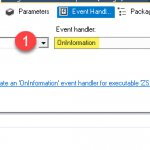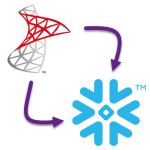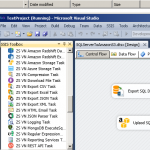Introduction In our last post (Regex Cheat Sheet) we explained use cases of SSIS Regular Expression Parser Task . Now lets look at some real world usecase. Basically in this article we are going to Extract data from audit log using SSIS. For demo purpose we will use log generated by SSIS Export CSV File Task output. When […]
Category Archives: SSIS CSV Export Task
How to convert SQL to CSV in SSIS
How to convert SQL to CSV in SSIS There are several tricks related to converting SQL to CSV. For example, dates, working with variables, converting text, working with stored procedures. In this article, we will work with several tips to convert SQL Server data to the CSV format. For this article, we will use the […]
Load 10M rows from SQL Server to Snowflake in 3 minutes
Introduction In this article, we will cover the points on how to load 10 million rows from SQL Server to Snowflake in just 3 minutes. Snowflake is a data warehousing platform that resides in a cloud. Basically, it is a data warehouse software exposed as a service. It allows integrating many data sources via internal […]
SSIS Data Load – SQL Server to FTP/SFTP (Split Files, GZip)
Introduction In this blog post you will see how easy it is to load large amount of data from SQL Server to FTP/SFTP. SSIS Data Load – SQL Server to FTP/SFTP (Split Files, GZip). For demo purpose we will use SQL Server as relational source but you can use same steps for any database engine […]
SSIS Data Load – SQL Server to Azure Blob (Split Files, GZip)
Introduction In this blog post you will see how easy it is to load large amount of data from SQL Server to Azure Blob Storage using SSIS. We will export / compress data to multiple files. For demo purpose we will use SQL Server as relational source but you can use same steps for any […]
Loading data from SQL Server to Amazon S3 in SSIS (Split Files, GZip)
Introduction In this blog post you will see how easy it is to load large amount of data from SQL Server to Amazon S3 Storage. For demo purpose we will use SQL Server as relational source but you can use same steps for any database engine such as Oracle, MySQL, DB2. In this post we […]





